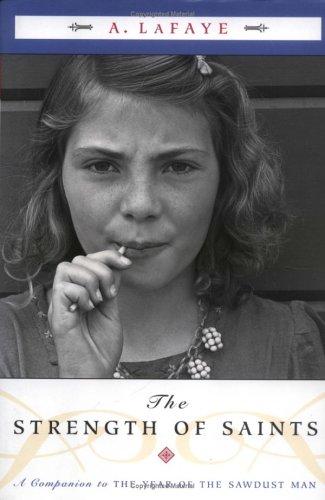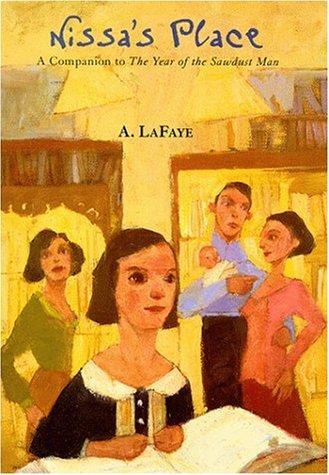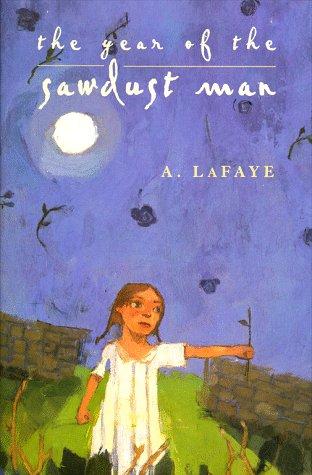LaFaye, A.
12 Reviews
(4)
K-3
Illustrated by
Jessica Gibson.
Foreword by Sylvia Townsend. In chipper first-person text ("As musical notes start to float, I rise to my toes"), the authors describe African American ballet dancer Sylvia Townsend's childhood. Although her parents couldn't afford lessons (and segregation meant that ballet school was "for white girls" only), Townsend turned to the town bookmobile to teach herself and others. The digital illustrations are somewhat generic but bright and cheerful. Reading list, timeline. Bib.
Reviewer: Elissa Gershowitz
(3)
K-3
Illustrated by
Keith D. Shepherd.
"War's over. Government say we free." A young boy, Gabe, searches for his mother, who was "sold...away from me." Along the way he's aided by other free black people. Just as he's about to give up, his story, lyrically told, takes a joyous turn. Emotion-filled illustrations capture the intense focus of young Gabe. An author's note is appended.
Reviewer: Henrietta M. Smith
(3)
YA
Lyza's family lives quietly in a Maine cove village. Pater carves sculptures of the dead and launches them out to sea while Mater sews dresses; Lyza has no artistic skills, no gift for creating. When Mater dies in the 1918 influenza pandemic, Lyza must keep Pater from an asylum. This dark, chilling supernatural tale leads readers beyond the boundaries of this world.
Reviewer: Nancy Hull
(4)
4-6
Kyna's terrified of water; her family drowned during a storm, and only she survived. It isn't easy for her to spend a summer near a lake, even with her adoptive parents' tales of silkies (seal/human creatures that protect swimmers) to comfort her. The story's lyricism, though smooth, slows the plot, and the secret is obvious, but the Irish folklore element adds interest.
Reviewer: Rachel L. Smith
(3)
4-6
Fourteen-year-old Stella stands out in her post–Civil War Mississippi town for being a tomboy, having African American friends, and speaking her mind. After her father's murder, she fears foreclosure on their plantation on which freed slaves democratically work the farm. LaFaye effectively shows a community where blacks and whites work together during Reconstruction.
Reviewer: Betty Carter
(2)
4-6
An accident has almost cost eleven-year-old Nate his leg, making him useless for farm work. When his father brings home an orphan boy to help him work their Nebraska homestead, the new arrival heightens Nate's feelings of frustration, anger, and sadness. Each boy wants what the other has, and both boys yearn for the love of their fathers. This short tale has a quietly epic sweep.
Reviewer: Susan P. Bloom
| Horn Book Magazine Issue:
July, 2004
(4)
4-6
When Northerners come to 1936 Harper, Louisiana, to build a cannery, racial tension between the black and white workers escalates. In this third novel about fourteen-year-old Nissa, the protagonist breaks up a racially motivated fight and becomes (to some) a town hero. The tone of this first-person narrative is sometimes sanctimonious and the language too adult sounding, but the story and characterizations are engaging.
Reviewer: Bridget McCaffrey
(4)
4-6
When Ebon's eccentric father lapses into a coma after a fall, the fourth grader and his family have difficulty dealing with the tragedy but regain hope when Dad appears to them in spirit form. Unfortunately, the longer he visits his loved ones as a spirit, the weaker his body becomes. The pace of the novel drags, but the book's premise is intriguing.
Reviewer: Anne St. John
(3)
4-6
Twelve-year-old Raleia and eighty-eight-year-old recluse Ian forge an unlikely and combative but ultimately rejuvenating friendship during a summer in Tidal, Maine. Ian becomes the catalyst for Rale's realization that nothing can compete with living in the here and now. Self-growth is the only action here, but Rale and Ian are sympathetic, fully realized characters.
Reviewer: Carolyn Shute
(3)
4-6
In this sequel to The Year of the Sawdust Man, Nissa is now thirteen and living with her father and new stepmother in depression-era Louisiana. But her unconventional, britches-wearing mother, who walked out on them, wants Nissa to live with her in Chicago. In an evenly paced and thoughtful first-person narrative, Nissa finds a balance between her new family, her mother, and the prejudices of her small-town neighbors.
Reviewer: Bridget McCaffrey
(4)
YA
Boarding a train for Chicago, sixteen-year-old Katherine Lunden leaves her rural Wisconsin home in search of the exciting city life she reads about in the post-Civil War newspapers. Assuming the name Edith Shay from an abandoned suitcase, Katherine is fortunate to fall into the hands of kind souls in each city she visits, but her adventures, and misadventures, although too mild to seem realistic, make a pleasant story of learned self-reliance.
Reviewer: Juliet Stebbins
(4)
4-6
When her mother packs her things and leaves, eleven-year-old Nissa must deal with the small-town gossip. Set in 1933 Louisiana, the story and evocative language accurately portray the emotional upheaval of an abandoned child. However, the repetition of these emotions and thoughts becomes somewhat tedious, and the observations in the first person narration range from immature to precocious.
Reviewer: The Horn Book, Inc.
12 reviews
We are currently offering this content for free. Sign up now to activate your personal profile, where you can save articles for future viewing.















